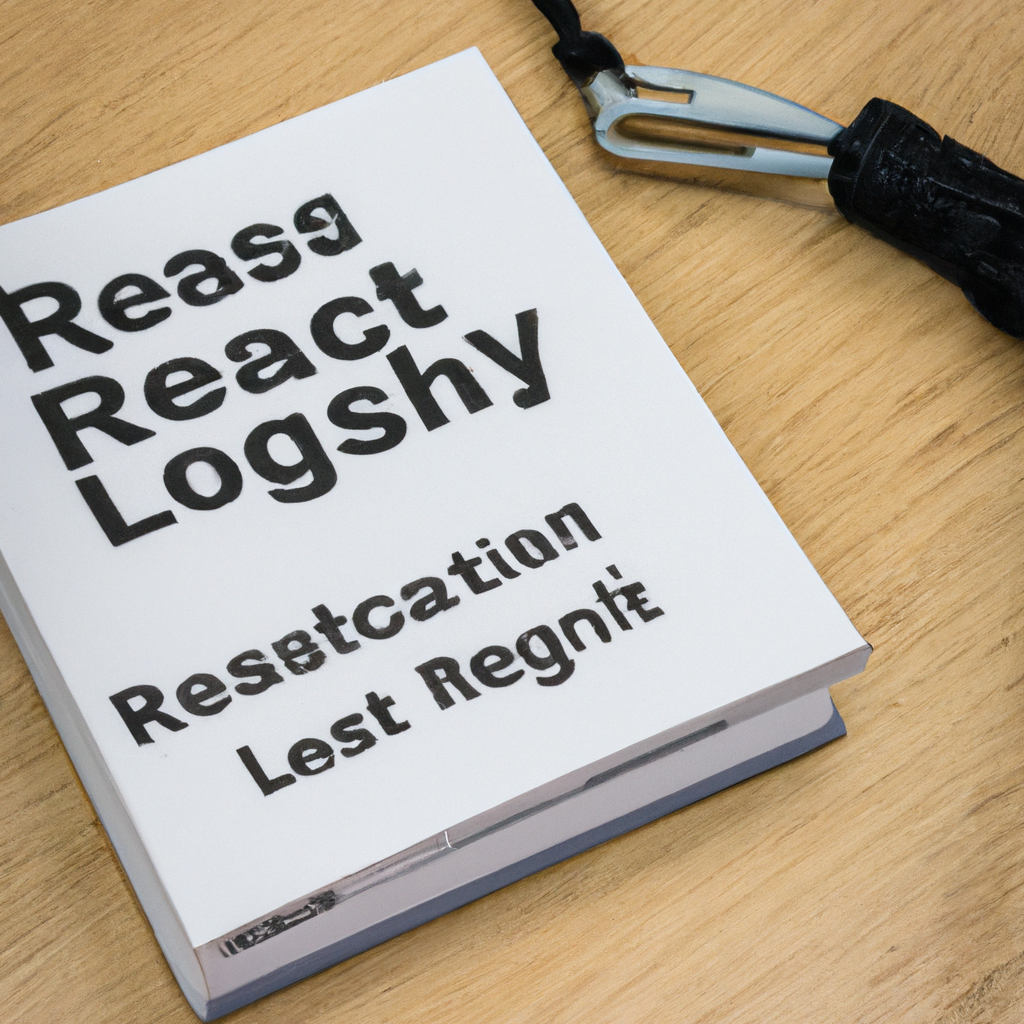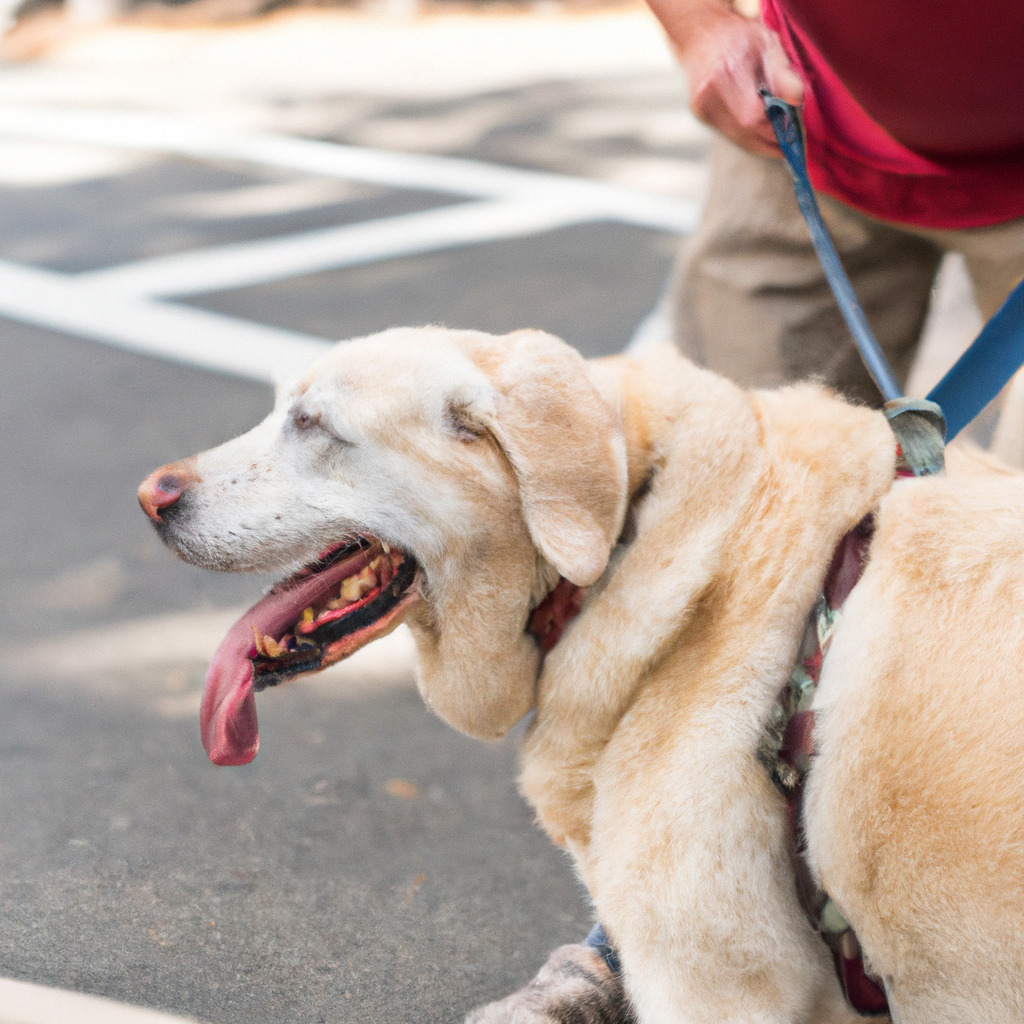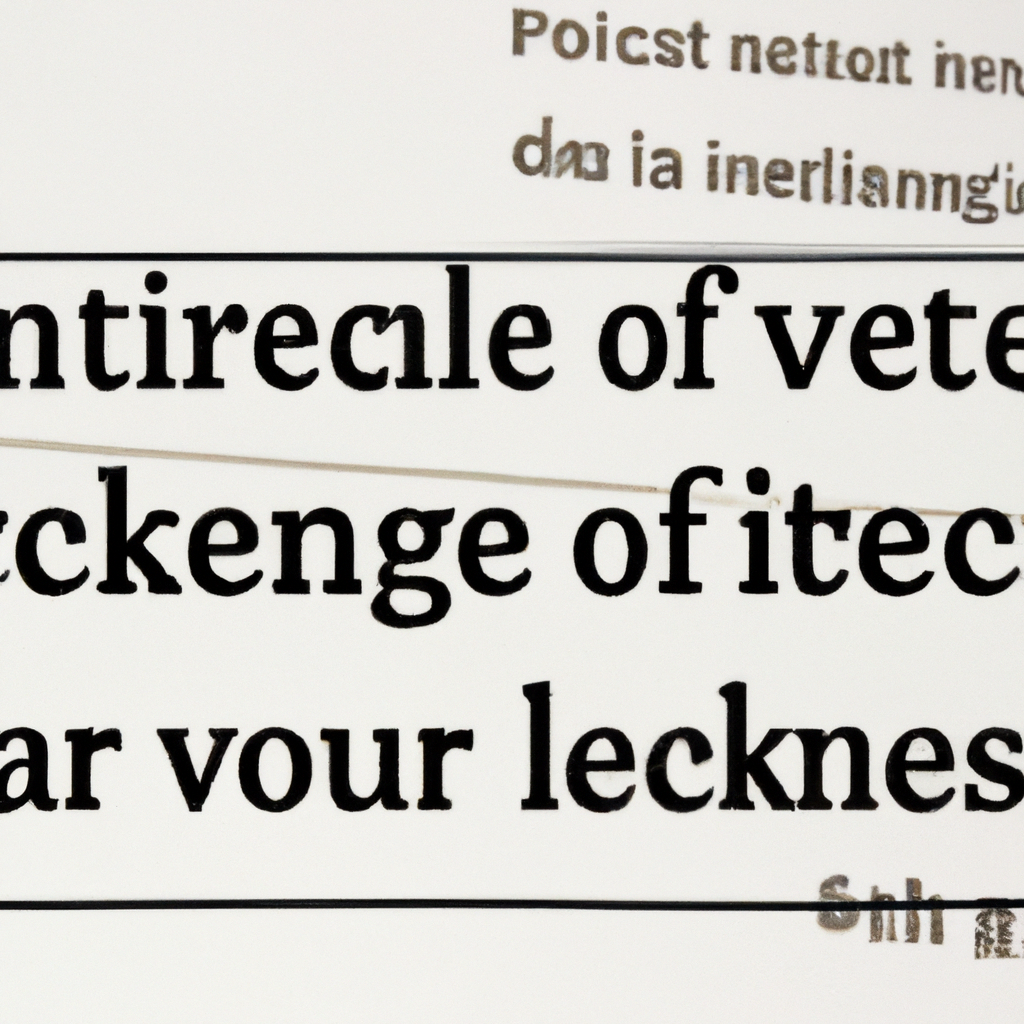Recognizing and Addressing Leash Reactivity in Dogs
As the sun slowly sets, casting a golden glow over the park, dog owners eagerly embark on their evening

A Symbiotic Symphony: Decoding the Language of Leash Reactivity in Dogs
Imagine embarking on a harmonious stroll with your furry companion, basking in the radiant sunlight, only to find yourself dragged into a symphony of chaos as your four-legged friend lunges and barks ferociously at the sight of another dog. Is this a mere act of aggression or could there be something deeper at play? Welcome to the intriguing world of leash reactivity, where the leash acts not only as a physical restraint but also as a bridge between canine minds. In this article, we will embark on a quest to recognize and address the enigmatic leash reactivity that often plagues our beloved companions, unearthing the secrets, understanding the complexities, and embracing the harmony that lies beneath the surface. Join us as we embark on this enlightening journey with open minds and open leashes.
Understanding Leash Reactivity in Dogs: Causes and Triggers Explored
Leash reactivity is a common issue that many dog owners face when out on walks. It refers to the unwanted behavior displayed by a dog when they are on a leash, often manifesting as excessive barking, lunging, or growling towards other dogs or even people. While it may seem intimidating or frustrating, it’s crucial to understand the causes and triggers behind leash reactivity to help your furry friend overcome this challenge.
One of the primary causes of leash reactivity stems from fear or anxiety. Dogs that have had previous negative experiences, lack socialization, or have a timid temperament are more prone to exhibiting reactive behavior. Additionally, frustration from being restrained on a leash, perceived territoriality, or even a strong desire for social interaction can contribute to leash reactivity.
- Previous negative experiences
- Lack of socialization
- Timid temperament
- Restraint frustration
- Perceived territoriality
- Desire for social interaction
To effectively address leash reactivity, identifying the triggers is crucial. Common triggers can include the presence of unfamiliar dogs, loud noises, sudden movements, or even certain scents that trigger a negative response. By recognizing these specific triggers, you can actively work on desensitizing your dog through positive reinforcement and behavior modification techniques to minimize their reactive responses.
- Unfamiliar dogs
- Loud noises
- Sudden movements
- Specific scents
Understanding leash reactivity and its underlying causes is key to helping your dog overcome this challenging behavior. With patience, consistency, and professional guidance if needed, you can support your furry companion in building confidence and developing positive associations while on a leash, creating more enjoyable walks for both of you.

Recognizing the Signs of Leash Reactivity: Body Language and Behaviors to Watch For
If you’ve ever walked a dog on a leash, you know that sometimes things don’t go quite as planned. Leash reactivity is a common issue that many dog owners face, but it is often misunderstood. By learning to recognize the signs of leash reactivity, you can better understand your furry friend and work towards creating a more enjoyable walking experience for both of you.
Observing your dog’s body language is key to identifying leash reactivity. Look out for the following behaviors:
- Tail position: An elevated or tucked tail can indicate stress or anxiety.
- Stiff body: If your dog appears tense, with rigid muscles and a stiff posture, it may be a sign of leash reactivity.
- Direct staring: Intense eye contact and a fixed gaze can be an indication that your dog is feeling threatened.
- Growling or barking: Obvious signs of aggression, growling or barking can occur when your dog feels uncomfortable on the leash.
It’s equally important to pay attention to your dog’s behavior towards other dogs or people while on leash. Watch for these signs:
- Pulling towards a target: If your dog becomes overly excited or lunges towards another dog or person, it may be a display of leash reactivity.
- Freezing or stopping in their tracks: Your dog may show resistance by completely halting their movement when encountering a potential trigger.
- Avoidance: Dogs dealing with leash reactivity may try to distance themselves from what they perceive as a threat by attempting to move away or hide.
- Sudden hyperactivity: Some dogs respond to leash reactivity by becoming hyperactive and overly energetic in an attempt to divert their attention.
Recognizing and understanding these body language and behavioral signs of leash reactivity will enable you to take appropriate actions to help your dog feel more comfortable and confident during walks. Remember, patience, positive reinforcement, and seeking guidance from a professional dog trainer can make a world of difference in managing and modifying leash-reactive behavior!

Effective Strategies for Addressing Leash Reactivity: Training and Management Techniques
Leash reactivity in dogs can be a challenging issue to tackle, but with the right strategies, it is possible to improve their behavior and make walks enjoyable for both you and your furry friend. Here are some effective training and management techniques that can help address leash reactivity:
- Positive Reinforcement: Use rewards like treats, praise, and play to reinforce good behavior and create positive associations with other dogs or stimuli.
- Desensitization: Gradually expose your dog to triggers that cause reactivity, starting from a distance and increasing exposure over time. Pair these experiences with positive reinforcement to help them overcome their fear or anxiety.
- Counter Conditioning: Teach your dog an alternative, incompatible behavior to display in response to triggers. For example, train them to focus on you and perform commands like “sit” or “watch me” when another dog approaches.
- Management Techniques: While working on training, it’s essential to manage your dog’s environment to minimize triggers and reactions. This can include using a front-clip harness, maintaining distance from other dogs, or altering walking routes to avoid problematic areas.
Remember, consistency and patience are key when addressing leash reactivity. Consulting with a professional dog trainer or behaviorist can also provide personalized guidance and support. By implementing these strategies and tailoring them to your dog’s needs, you’ll be on your way to fostering positive behavioral changes and enjoying stress-free walks together.

Creating a Positive Leash Walking Experience: Tips for Rehabilitation and Behavior Modification
Creating a Positive Leash Walking Experience
When it comes to leash walking, many dogs may initially struggle with pulling, lunging, or becoming reactive. However, with the right approach and a bit of patience, leash walking can become a positive experience for both you and your furry friend. Here are some tips for rehabilitation and behavior modification that can help transform your walks into enjoyable outings:
- Implement Positive Reinforcement: Instead of punishing your dog for unwanted behaviors, focus on rewarding and reinforcing positive actions. Use treats, praise, or toys to encourage your dog to walk calmly beside you.
- Take Baby Steps: Rehabilitation takes time, so start with short, manageable walks. Gradually increase the duration and complexity of your outings as your dog becomes more comfortable and confident.
- Use Desensitization Techniques: If your dog exhibits fear or aggression towards certain triggers, such as other dogs or loud noises, work on desensitizing them to these stimuli. Start by exposing them to mild versions of the trigger and gradually increase the intensity over time, always rewarding them for remaining calm and focused.
- Practice Loose Leash Walking: Teach your dog the concept of walking on a loose leash. Use treats or a clicker to reward them when they stay by your side without pulling. This will help foster a positive association with walking calmly beside you.
- Consider Professional Help: If your dog’s leash walking challenges persist or become too overwhelming, don’t hesitate to seek the assistance of a professional dog trainer or behaviorist. They can provide expert guidance tailored to your dog’s specific needs.
Remember, creating a positive leash walking experience requires consistency, patience, and understanding. By focusing on positive reinforcement and gradually working towards your goals, you can help your dog overcome behavioral issues and enjoy pleasant walks together.
Future Outlook
As we approach the end of our exploration into the intricate world of recognizing and addressing leash reactivity in dogs, we find ourselves reflecting upon the profound ways in which our four-legged companions can both challenge and enrich our lives.
Through this journey, we have delved into the mysterious inner workings of a dog’s mind to uncover the underlying causes of leash reactivity. We have sought to empower dog owners and professionals alike with knowledge and understanding, so that together we can pave the path towards a harmonious and enjoyable walking experience for both human and canine.
Just as a skilled conductor guides the symphony of emotions within a dog, we have unveiled a meticulously crafted repertoire of techniques and strategies to counteract leash reactivity. We have witnessed the wonders of counter-conditioning, where fear and anxiety are replaced with calm and confidence. We have heartened owners by highlighting the significance of consistency, patience, and positive reinforcement in rewiring their dog’s behavioral responses.
Yet, as we conclude this chapter, it is crucial to acknowledge that the journey towards overcoming leash reactivity is not a linear one. It is a voyage fraught with ups and downs, as individual as the dogs themselves. However, armed with knowledge and equipped with an unwavering dedication to our furry companions, we channel the force of determination to conquer the obstacles that lie ahead.
In recognizing and addressing leash reactivity, we lay the foundation for a future filled with freedom, happiness, and unbounded joy for both handler and hound. By fostering an environment of empathy, understanding, and respect, we unlock the potential for transformative change in our dogs, allowing them to flourish as confident and well-adjusted members of society.
As we bid farewell to this exploration, we urge fellow dog lovers to embrace the challenge of understanding leash reactivity. Let us stand united in our commitment to seeing beyond the surface, valiantly unraveling the complexities that lie beneath. For it is through this dedication that we forge a world where our faithful companions can walk beside us with a spring in their step and love in their hearts.
In the end, recognizing and addressing leash reactivity is not solely about fixing a problem—it is about fostering a profound connection with our canine counterparts. Let us continue to grow, learn, and empower one another, as we embark on this wondrous voyage of understanding and unconditional love.






